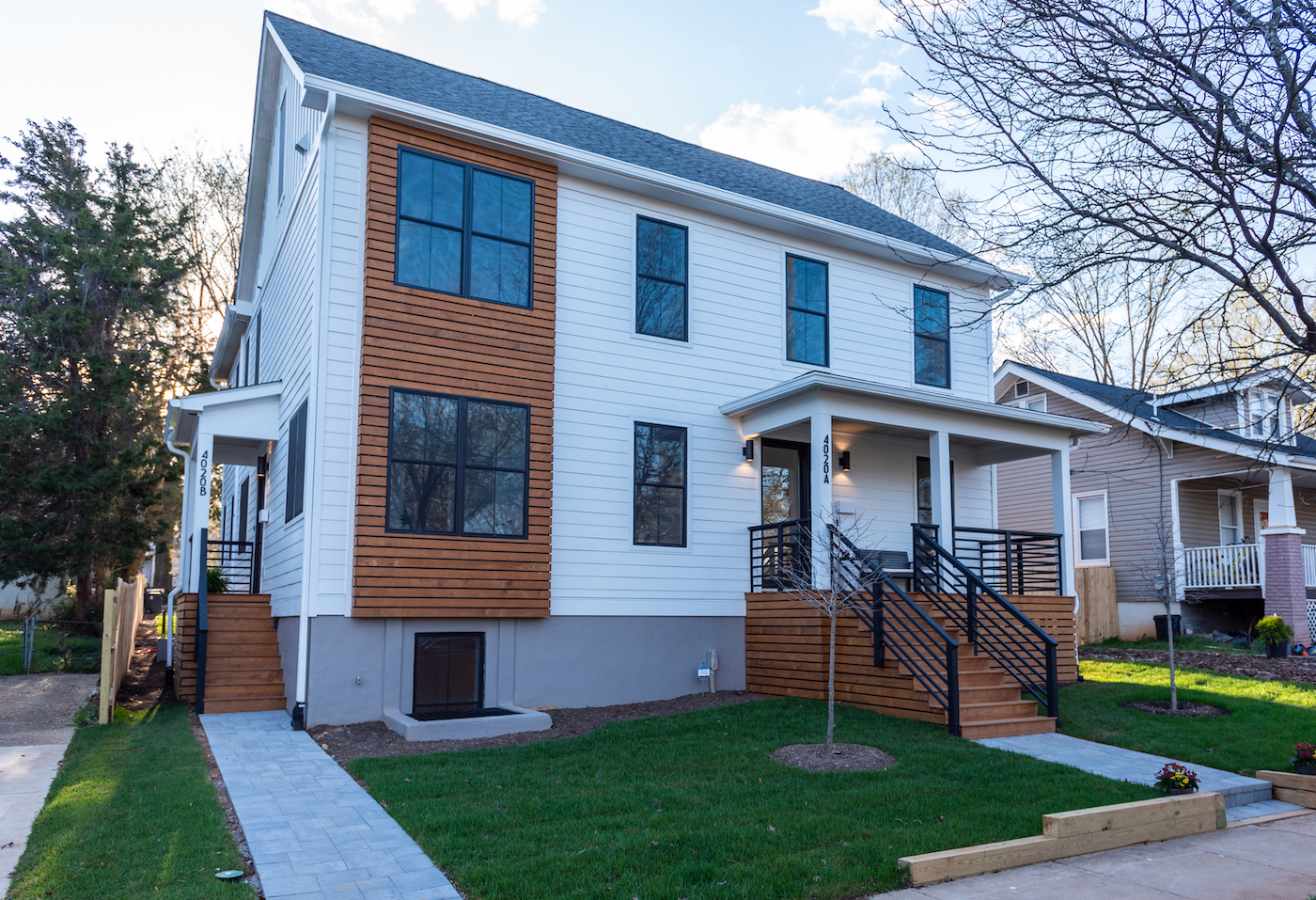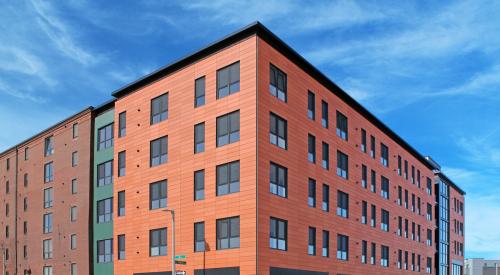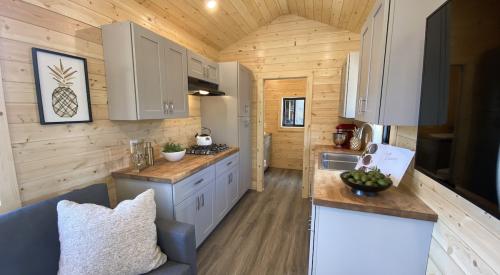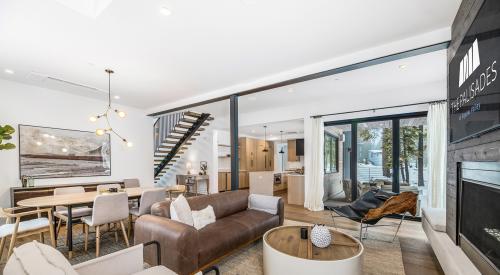In many areas of the country, the housing market is slim pickings—and it’s not just due to supply chain issues caused by the COVID-19 pandemic. For the last several years, major cities have experienced growing populations with limited housing. Too many homebuyers were forced to compromise with long commute times or buying a major fixer-upper with the intent to completely gut it and rebuild again.
These trends create significant competition for single-family homes while making affordable housing and multifamily options scarce. Also, high-performing homes purpose-built for wellness and energy efficiency are nearly impossible to find unless you wade into the suburbs. Knowing there must be a better way, builders Nicole Tysvaer and Matt Kulp started thinking about a different approach to new builds. After working on custom homes and retrofits in the metro Washington D.C. area for several years, they became frustrated with the out-of-reach costs and lack of options for high-quality, sustainable homes for the average homebuyer.
Development of Symbi Homes
In 2015, Tysvaer and Kulp joined forces with architect John Linam to develop Symbi Homes. With the goal of developing a symbiotic relationship between housing, people and nature, the team designs affordable, high-performance homes with enhancements not found in your typical new build or custom renovation. The team recently completed the Symbi Duplex One, a net-zero energy ready semi-detached duplex in Mount Rainier, Maryland. As with all Symbi Home projects, the duplex’s design follows the team’s five core sustainability principles:
- Health and well-being
- Water and energy efficiency
- Sustainable materials and construction processes
- Zero Energy Ready certification
- Home automation and performance monitoring
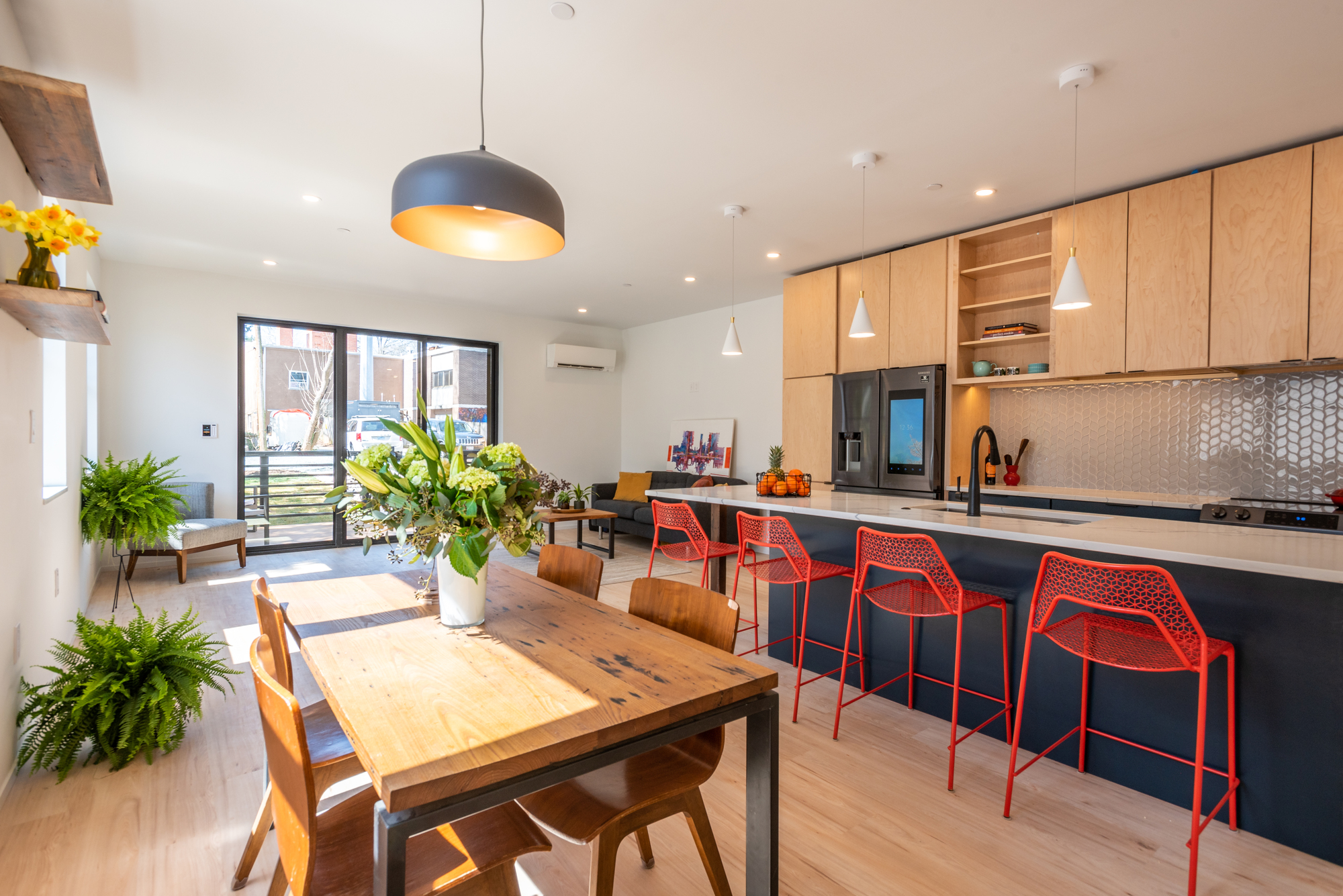
“We believe there is an enormous market for small, multifamily dwellings in traditional single-family zones to help address housing shortages and affordability,” says Tysvaer, CEO, Symbi Homes.
Case in Point: Symbi Duplex One
For Symbi Duplex One, the team razed a 1920s home and started fresh from the ground up. Each of the two units include 2,260 square feet of above-ground living space and 950 square feet of basement space, with 5 bedrooms and 3.5 bathrooms. Open, airy interiors give each home a spacious feel and energy-efficient appliances, lighting and sustainable paints and stains were used throughout the home.
As Tysvaer and Kulp strive to make their homes affordable, choosing the right mechanical systems and materials was incredibly important. Mitsubishi Electric Zoned Comfort Solutions® were selected for use in Symbi Duplex One to provide a comfortable environment for tenants while keeping operational costs to a minimum.
The team chose a hybrid mini-split heat pump system consisting of one ductless MSZ-FS Deluxe Wall-mounted Indoor Unit and one ducted SVZ Multi-position Air Handler for each duplex. The MSZ-FS features one of our latest innovations, industry-first Dual Barrier Coating. Applied on the inside of the unit’s heat exchangers, vanes, air duct and blower wheel, the coating combats airborne particles and simplifies system maintenance.
The future homeowners can rest assured the indoor unit will run smoothly, without collecting damaging particle build up that can affect indoor air quality (IAQ) and system performance over time. Both outdoor units specified, the SUZ Universal Heat Pump and MXZ Heat Pump, are part of Mitsubishi Electric’s M-Series lineup and offer Hyper-Heating INVERTER® (H2i®) capability. This allows the system to deliver supreme comfort year-round, providing 100% of heating capacity in outdoor ambient temperatures as low as 5° F and continued operation down to -13° F.
To learn more about the project, check out the YouTube series!
Read the full case study on the Symbi Duplex One project.


